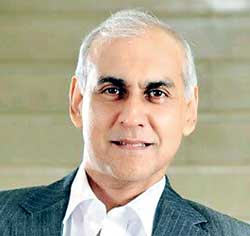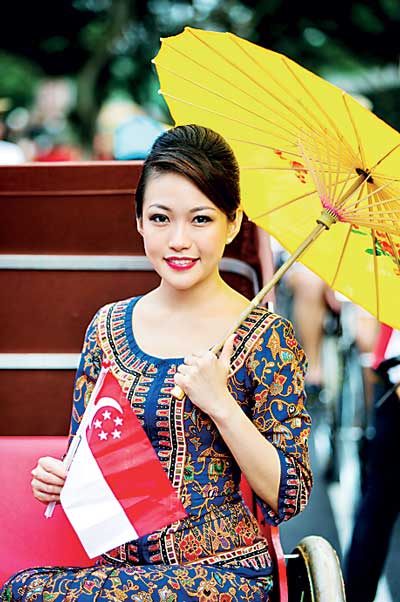Sunday Dec 07, 2025
Sunday Dec 07, 2025
Wednesday, 7 October 2015 00:00 - - {{hitsCtrl.values.hits}}

By Ruchi Gunewardene
Successful brands are built in the laboratories and not in the media. This involves research and development departments where companies invest in creating new products, systems and processes or gathering and mining data to understand trends in the laboratories of our minds. Facts, imagination, insights and a sense of the future are the bedrock on which truly successful brands are built.
Doing so requires diligent gathering, harnessing and applying the right resources to create unique products and services. For example Body Shop offered ethical products way back in the 1980’s, before it became a trend and reaped the benefits of that differentiation for many years, before competitors took notice and followed suit. Similarly companies such as Amazon were built on technological innovations in the 1990’s with a future view on how consumers would purchase products before others followed.
Even business to business companies need to look at branding in similar vein, by searching beyond their core manufacturing capabilitiesand exploring ways of enhancing systems, processes, practices which can create points of service differentiation that customers appreciate.
This is what consumers who are inundated by products and offers are looking for, and is the essence of a strong brand. It is what sets one brand apart from another.
In order to ensure there is consistency in this delivery, and there is continuous improvement, there has to be a clear definition of what the brand stands for. Unless this is done and grounded in each individual company, there will be little incentive or direction for the employees to follow.
In this context, the brand is no longer a logo or a sexydesign. It is not limited to what the packaging looks like. Instead, it is a holistic expression of the user experience.
Step 1: Define 
the brand
Defining the brand and what it is expected to be, along with a supporting set of beliefs for employees to follow, is the first step in the brand building process. This is linked to both the business rationale and the aspirational role that it has set itself to play. This involves introspection to understand what it can deliver, coupled with an outward view to ensure it does so in a uniquely different way, which is how Ceylinco Insurance revolutionised the motor insurance market and stamped its leadership through “on the spot”.
Step 2: Gettingemployees to believein the brand
Ensuring consistent behaviour or service delivery across all employees is a challenge which involves strong and sustained internal communications and carrying through the meaning of the brand from awareness, understanding, belief to actually acting on it. This has been the Dialog mantra around delivering the ‘future today’, which instils innovation across all platforms.
Step 3: Delivering the experience
It is the front line staff who meet, greet and assist customers, who are the face of the brand in any service related or business to business company. Hotels, hospitals, retail stores including those selling products directly to other businesses (e.g. apparel manufacturers) need to get their employees to ‘live’ the brand, to uniquely differentiate themselves.An employee at Embark for example is bound to be an animal lover, which makes the brand delivery so much more authentic.
Step 4: Reward and recognise
Rewarding employees who live the brand on a continuous basis and aligning the recruitment to hire those who are most likely to suit the brand ensures continuity to build for the long term. Looking for the right skills and aptitudes that will represent the brand promise, results in over-coming the difficulties with employees who are not in step with the expectations of the business. Based on the clarity of the Ceylinco, Dialog and Embark brands, they are able to fully align employee’s actions to deliver each experience.
Singapore Airlines is a brand that captures all of these steps.
Looking beyond the Singapore Girl
The highly aspirational Singapore Girl is only the tip of the iceberg. By delving deep into the organisation, and identifying its systems and processes we can truly understand how they are able to deliver the brand experience.
Singapore Airlines starts its service delivery by identifying its weak points, which it does through customer complaints. Every customer letter be it a complaint or a compliment creates a chain reaction throughout the organisation. Depending on the issue at hand, it gets the rigorous attention of the relevant people cascading up the organisation and is then resolved with the single minded objective of fixing it with a proactive solution.
They also have a programme for staff ideas related to two specific areas, on how service could be improved to customers and how costs can be cut. Cost cutting is a demanding culture within Singapore Airlines.
The company also uses benchmarking studies to establish its service standards, not just from within the airline industry but from other industries as well. It studies all sources of intelligence available from IATA, Global Airlines Performance (GAP) survey and flying on competitor airlines to obtain intelligence and competitive offerings.
Outside the industry it would benchmark its service standards with the best hotels and retailers of the worldamongst others, by carrying out similar surveys. The objective of these studies is to elicit the wow factor from customers through minute innovations. To further help in this process, there is a dedicated product innovation department that looks at global trends and customer lifestyle needs and future expectations and the resultant likely behaviour.
Innovations that they have created through such forecasting have included Krisworld on-demand entertainment for all classes, a class beyond first on the A380 airline, amongst many others which are now industry standards.
An investment of one million dollars in a simulator that created the identical air pressure and humidity as that of an air borne aircraft led them to discover changes in food on the palate, which led to moderating the level of spice in their servings.
The entire cabin experience of the Singapore Girl is so finely honed that they undertake research, trials, time and motion studies to assess the customer reaction during various phases of interaction to ensure that a service innovation is supported by a documented procedure.
Which then leads to the entire training system.The Singapore Girl air stewardesses undergoes training for 15 weeks compared to the industry average of eight weeks. Apart from being nearly double that of other airlines it includes areas of high specialty too beyond just the functional skills of a stewardess. It includes soft skills such as personal interaction, personal poise, grooming and deportment and even skills relating to managing one’s own emotions with handling highly demanding passengers.
In addition, the company supports extra-curricular activities such as performing arts, wine appreciation, gourmet food appreciation and compulsory community engagement at various welfare programmes. Whilst the training programme is transformational, these activities help build friendship amongst themselves and empathy with the community.They can also choose courses such as leadership skills, European languages amongst others, whilst moving from a system of directing the courses to one of self learning.
According to Brand Finance research, Singapore Airlines is the world’s most valuable airline brand. As can be seen, a significant portion of their brand building investment is made inside the business itself, which leads to customer loyalty and willingness to pay a premium to enjoy the Singapore Airline service experience, all of which is embodied in the iconic Singapore Girl.
(Ruchi Gunewardene is the Managing Director of Brand Finance Lanka and Founder of STING Consultants).